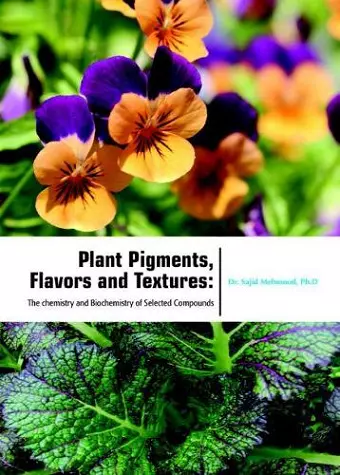Plant Pigments, Flavors and Textures
The chemistry and Biochemistry of Selected Compounds
Format:Hardback
Publisher:Delve Publishing
Published:30th Nov '16
Should be back in stock very soon

Pigments or biochrome are the substances present in all living matter and play basic roles in the development of living organisms including plants. Plants use these pigments for the variety of functions including photosynthesis, signaling, to ward off herbivores and attracting pollinating and dispersal agents. The most common plant pigments are chlorophylls, carotenoids, betalains and anthocyanins. In fact, chlorophylls are the most important organic compounds, essential for photosynthesis. Carotenoids presents in plants are usually play their roles in both nutrition and photosynthesis and are necessary for the survival of both mammals and plants. They also served as precursors of plant hormone abscisic acid in higher plants. Another role of carotenoids is to protect photosynthetic organisms against potentially harmful photooxidative processes. Betalains are nitrogen containing water soluble compound, belonging to the families of Caryophyllales, except for Caryophyllaceae and Molluginaceae. Betalains are classified into yellow betaxanthins and red betacyanins and are immonium conjugates of betalamic acid. Anthocyanins are water soluble vacuolar pigments belonging to flavonoids. They appear in plants as blue, red or purple depending on the pH and synthesized through phenylpropanoid pathway. As these plant pigments are of many roles including structural to physiological functions in cells therefore special consideration has been given in this book to their salient characteristics, some biosynthesis and their chemical and biochemical role in different fields. Special attention is also given to specific role of these plant pigments in bioassays regarding the human health. Methodological applications for these pigments are also deeply demonstrated in few chapters including the In silico study for diversifying the molecular pathway of pigment formation.
ISBN: 9781680958966
Dimensions: unknown
Weight: unknown
248 pages